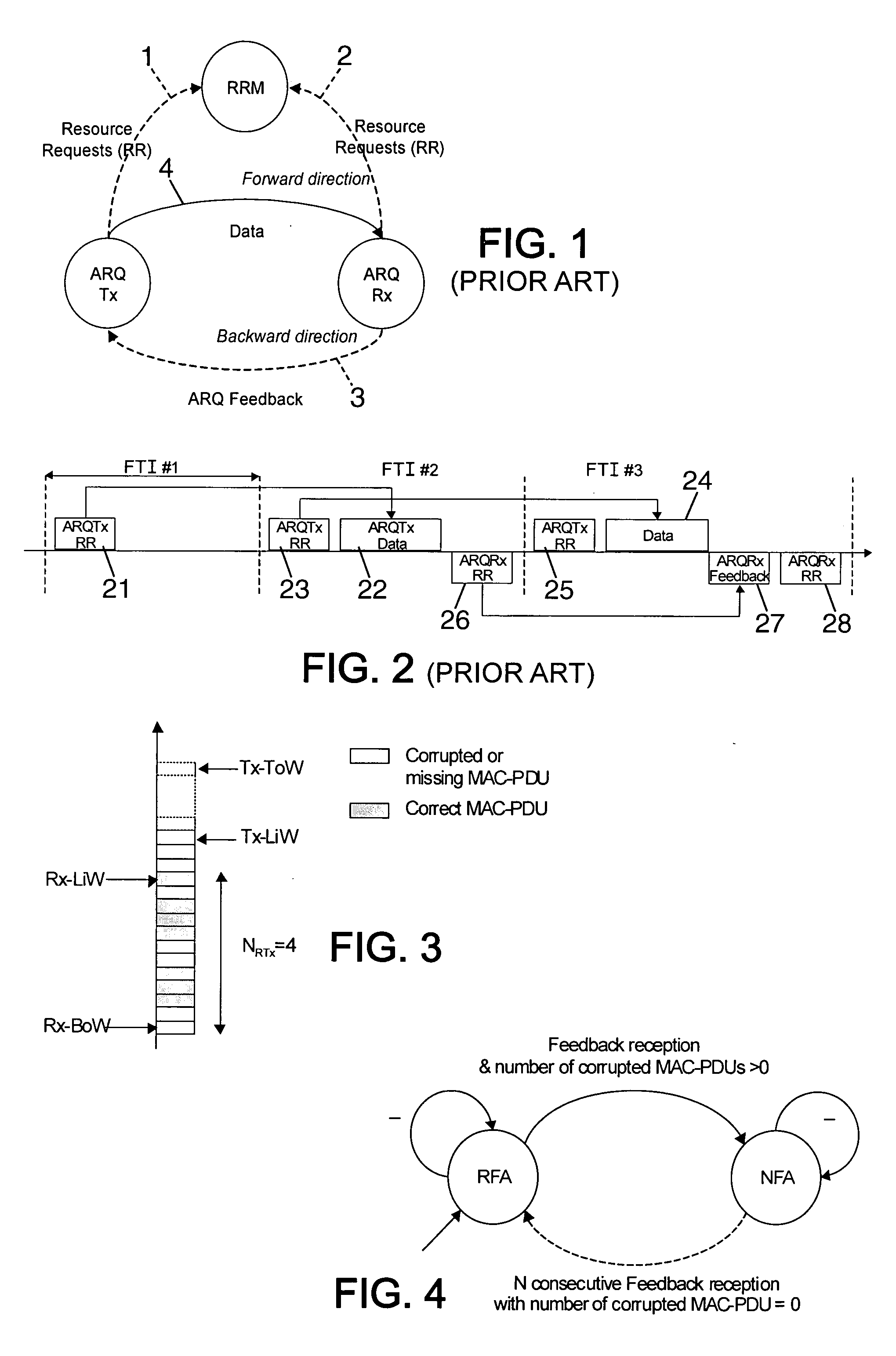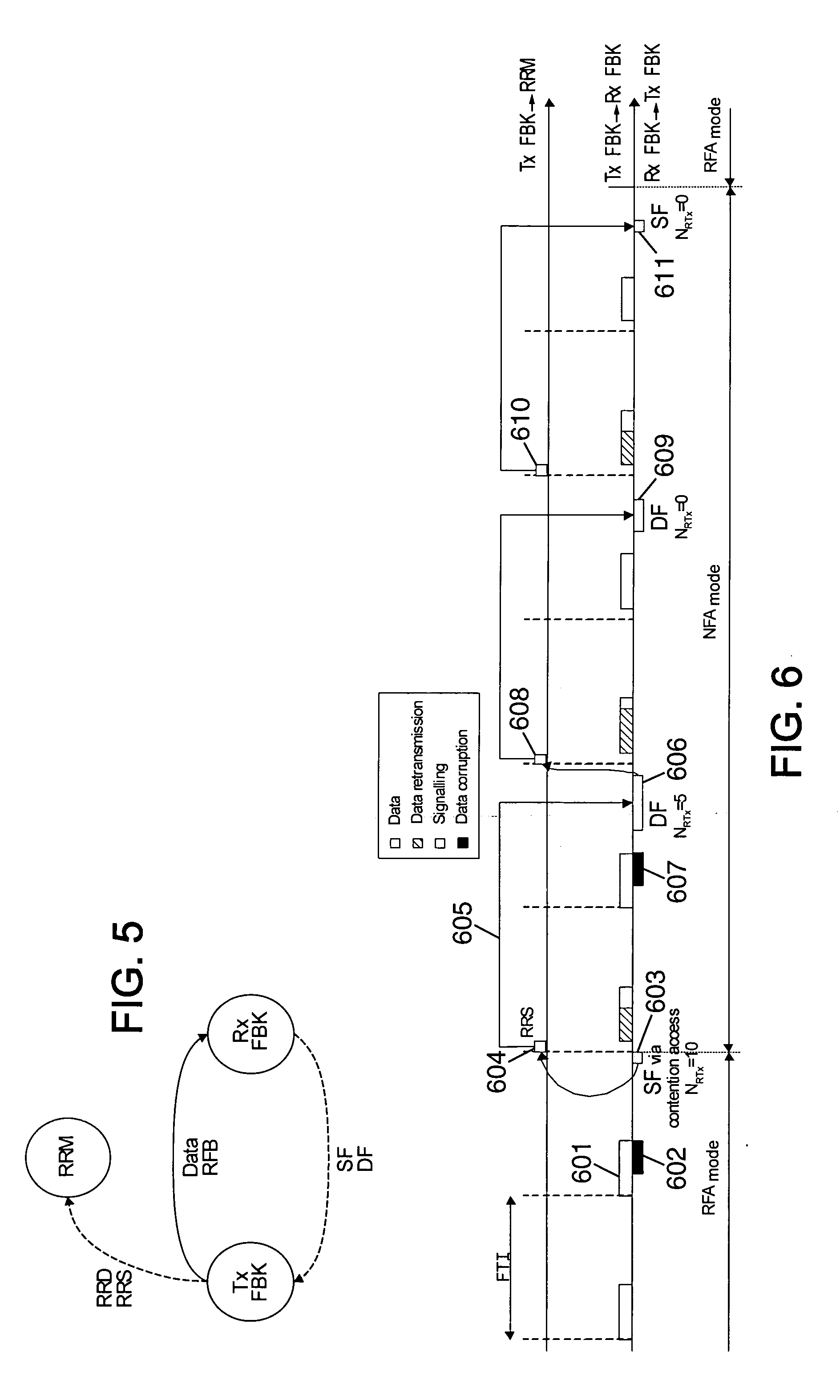Methods and devices of error control with feedback resource allocation scheme
a resource allocation and error control technology, applied in the field of communication networks, can solve the problems of low error rate of transmission, low error level of wireless networks, and general reliability of wireless mediums, and achieve the effect of reducing signalling overhead
- Summary
- Abstract
- Description
- Claims
- Application Information
AI Technical Summary
Benefits of technology
Problems solved by technology
Method used
Image
Examples
Embodiment Construction
[0028] One exemplary embodiment of the present invention takes place in a network comprising STAtions (STAs) including a communication protocols stack based on the OSI model of ISO. More particularly, a preferred embodiment of the invention is described here in one exemplary network as it is described below. Of course the scope of the invention encompasses applications to any stack of communication protocol layers and to other types of networks.
[0029] The STAs which are able to communicate between themselves are grouped together in a cell. A centralised TDMA MAC protocol based on a FTI is a scheme preferably adopted. A Radio Resource Management (RRM) unit is in charge of distributing the resource provided by the PHY layer among the STAs within the cell. In a TDMA scheme, a resource allocated to a given STA is a reserved time interval referred to as “dedicated access resource” in which the STA can transmit data over the medium. Preferably, a dedicated access resource may have a vari...
PUM
 Login to View More
Login to View More Abstract
Description
Claims
Application Information
 Login to View More
Login to View More - Generate Ideas
- Intellectual Property
- Life Sciences
- Materials
- Tech Scout
- Unparalleled Data Quality
- Higher Quality Content
- 60% Fewer Hallucinations
Browse by: Latest US Patents, China's latest patents, Technical Efficacy Thesaurus, Application Domain, Technology Topic, Popular Technical Reports.
© 2025 PatSnap. All rights reserved.Legal|Privacy policy|Modern Slavery Act Transparency Statement|Sitemap|About US| Contact US: help@patsnap.com



